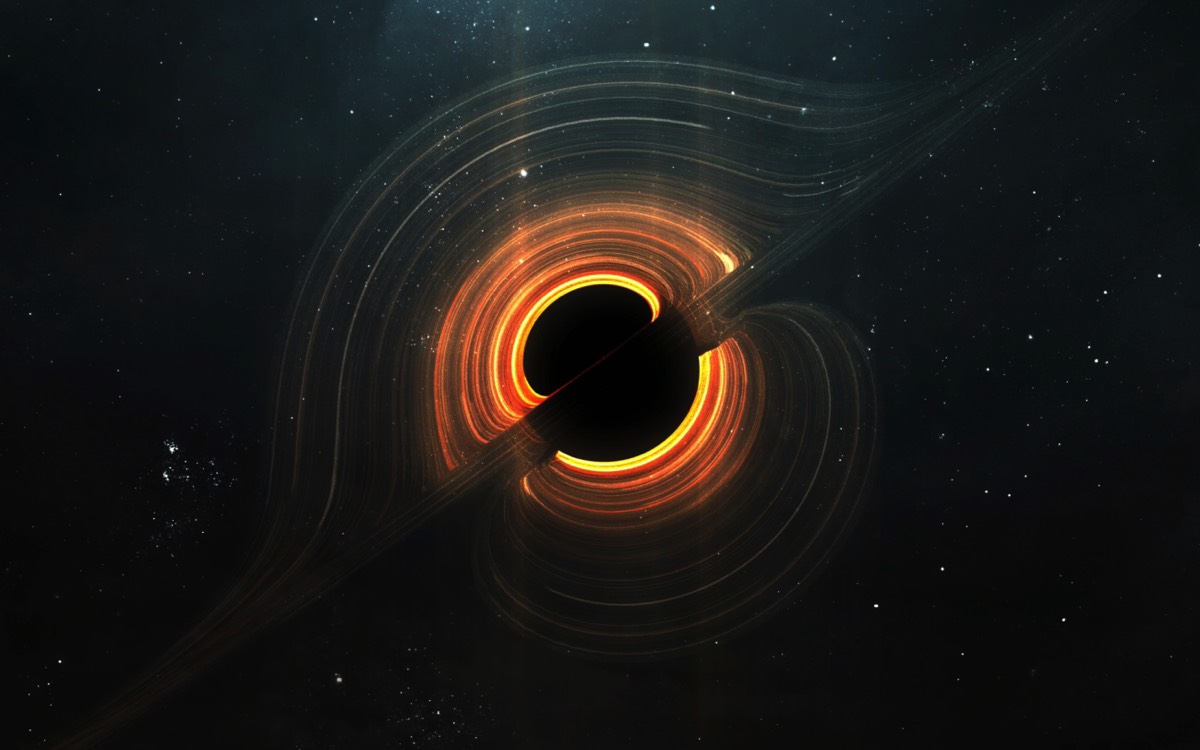
Black Holes
Black holes, these cosmic leviathans, have captivated and mystified scientists for decades. Their existence stretches the very fabric of our understanding of physics, blurring the lines between reality and theoretical possibility. Let's embark on a journey to unravel the mysteries of black holes, delving into their formation, structure, and the bizarre effects they have on spacetime.
From Stellar Giants to Gravitational Titans
The birthplace of a black hole is a colossal star, at least several times the mass of our sun. As these stars near the end of their fuel-burning lifespan, a delicate balance between outward pressure from nuclear fusion and inward pressure from gravity is disrupted. When the fuel runs out, gravity takes center stage, causing the star to undergo a dramatic collapse. This collapse isn't a gentle inward fall; it's a violent implosion that compresses the star's immense mass into a remarkably tiny region.
Singularity: A Point of Infinite Density?
According to Einstein's theory of general relativity, this inward crush can theoretically continue until all the star's mass is concentrated into a single point of infinite density called a singularity. Here, the laws of physics as we know them break down. Our current understanding of physics can't describe the mind-boggling conditions at a singularity – infinite density and zero volume simply don't compute within our current framework.
The Event Horizon: A Celestial Mousetrap
Surrounding this potential singularity lies a boundary called the event horizon. This is the point of no return for anything that ventures too close. The escape velocity – the speed required to overcome an object's gravity – becomes greater than the speed of light itself at the event horizon. Not even light, the universe's fastest messenger, can escape the clutches of a black hole once it crosses this threshold.
Beyond the Event Horizon: A Realm of Mystery
What happens beyond the event horizon remains shrouded in mystery. The intense gravity warps spacetime itself, making direct observation impossible. Scientists rely on complex mathematical models and observations of the environment around black holes to piece together the puzzle. One theory suggests the existence of a region called the ergosphere, where the spacetime is twisted so much that it begins to drag along anything that enters, forcing it to co-rotate with the black hole.
The Spaghettification Effect: A Gruesome Demise
If an unfortunate astronaut were to venture near a black hole, they wouldn't experience a sudden, fiery demise. Instead, the immense tidal forces – the difference in gravitational pull between the head and feet – would cause them to be stretched incredibly thin, a phenomenon aptly named "spaghettification."
Hawking Radiation: A Black Hole's Whisper
Interestingly, black holes aren't entirely silent. According to Stephen Hawking's theory, black holes emit a faint glow of radiation called Hawking radiation. This radiation is thought to be produced by the quantum fluctuations of spacetime at the event horizon. However, the amount of Hawking radiation emitted by a black hole is minuscule, and only detectable for very small black holes.
Black Holes: Nature's Grand Recyclers
Black holes aren't simply cosmic vacuum cleaners, sucking in everything that gets too close. They can actually play a vital role in galactic evolution. As black holes gobble up matter, they also release tremendous amounts of energy, influencing the environment around them. In some cases, this energy can trigger the birth of new stars, creating a dynamic interplay between destruction and creation.
Why Doesn't Time Stop Completely?
No, time doesn't stop at a black hole, but it does get warped by the black hole's intense gravity. Here's a breakdown of the concept:
Imagine time as a flowing river. A black hole's gravity acts like a massive boulder in the river, causing the water (time) to flow slower around it. The closer you get to the black hole (the event horizon), the slower time flows for you compared to someone farther away.
An astronaut falling into a black hole would experience time passing normally for them. However, for someone observing from a safe distance, the astronaut would appear to slow down dramatically as they approached the event horizon. They might even seem to freeze in time from the observer's perspective.
Even though time gets significantly slower, it doesn't completely stop at the event horizon. This is because according to our current understanding of physics, objects with mass (like an astronaut) can't reach the speed of light, which is the escape velocity at the event horizon.
The concept of a singularity, the point of infinite density at the center of a black hole, is a theoretical one. Our current understanding of physics can't describe what happens at a singularity, so it's difficult to say definitively what happens to time there. Some theories suggest that time might completely lose its meaning at this point.
A Universe Full of Questions
Black holes are a testament to the vastness and complexity of the universe. They challenge our understanding of physics and force us to confront the limitations of human knowledge. As we develop more powerful telescopes and hone our theoretical models, these enigmatic giants will undoubtedly continue to unveil their secrets, offering a deeper glimpse into the extraordinary workings of our cosmos.
While the exact nature of a singularity and what lies beyond the event horizon remain mysteries, the existence of black holes is strongly supported by scientific evidence. Their influence on the universe is undeniable, and they continue to be a subject of intense research and fascination.
